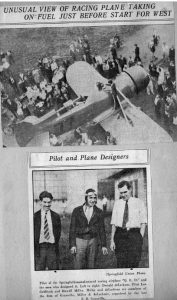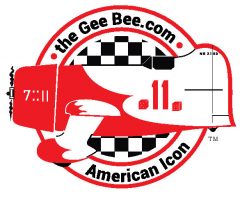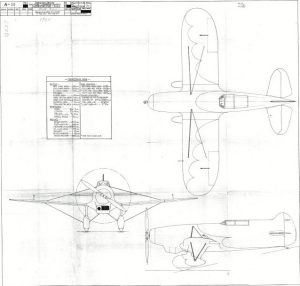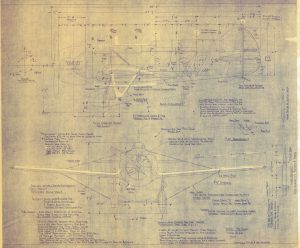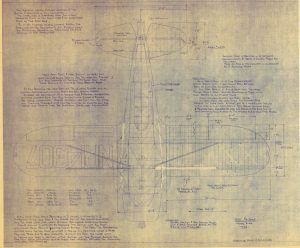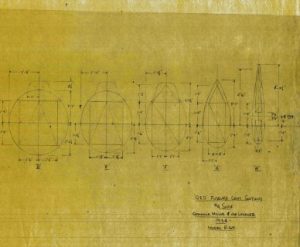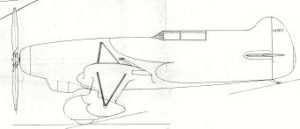
The Gee Bee International Sportster and GMD Q.E.D.
Our last story told of the final flight of the Gee Bee Model X in 1931. Today, we fast-forward beyond the turbulent years of 1932 and 1933 where the Granvilles reach the pinnacle of glory only to fall into an abyss of misfortune culminating in the liquidation of the Granville Brothers Aircraft Company in September 1933.
Following this, Zantford Granville and chief engineer Howell Miller, the creative design team behind the Gee Bee R1 and R2 Super Sportsters, join with aeronautical engineer Don deLackner to form an aviation consulting company in New York City. Known by the acronym GMD, the firm pins its hopes on three projects; the R5 International SuperSportster for the MacRobertson race, the Gee Bee Atlanta Indy Car, and the Ascender Roadable Aircraft.
On February 11, 1934, tragedy strikes again when Grannie Granville is killed landing his Gee Bee Model E in bad weather while avoiding construction workers on an airstrip in South Carolina. The three designs in his briefcase that day never get built.
On their own now, Miller and deLackner press on with the International SuperSportster. Enter Jackie Cochran noted aviatrix and up-and-coming air racer. She visits GMD’s New York offices, expresses interest in the racer and helps make a connection to financial backing with her future husband Floyd Odlum. But there’s a catch, the racer must be fitted with an inline liquid-cooled Curtiss Conqueror engine – just like her Northrop Gamma which is her first-choice entry in the 1934 MacRobertson race.
Jackie helps Pete Miller modify the R5 International SuperSportster into the R6C, the Conqueror-powered design which is destined to become the Q.E.D. (See general arrangement drawing).
In a turn of fate, Curtiss-Wright cannot deliver the Conqueror engine in time for the MacRobertson race scheduled to run on October 23, 1934. So, with some relief (he prefers Pratt & Whitney radial engines) Pete Miller and Don deLackner rapidly rework the design to fit the P&W Hornet, calculating an improved top speed in the process.
The second International SuperSportster 3v at left is very rough, a blueprint copy of the original marked up copy, but it does seem to convey the urgency at which this redesign was made. The detailed engineering work that the design was founded on is evident as well.
Looking at the documents and reading the first-person accounts of this period, one gains insight into how these small teams worked to rapidly develop and deliver some of the fastest aircraft in the world. The R6H (Hornet) Q.E.D. in the hands of Jacqueline Cochran and copilot Wesley Smith was a top challenger to DeHavilland’s Comet racers in the 1934 MacRobertson.
Personally, I am intrigued by the additional fin area that is sketched onto the redesigned Hornet-powered R6 general arrangement drawing. Was this a lesson-learned from the R1/R2 Hybrid racer that Roy Minor ran into a ditch in 1933? I find it interesting because my free flight scale model of the R6H Q.E.D. needed a similar fin area increase to track well in flight. It wasn’t until recently that I noticed this fin area addition on the marked up three view of the R6C International SuperSportster. I like to think this is one more example of how scale modeling can help make aviation history come alive.
Let’s conclude with “The Rest of the Story” as Paul Harvey would say. It turns out that Jackie Cochran was right to have the Q.E.D. readied as a backup for her Conqueror-powered Gamma as it washed out and was not ready for the 1934 MacRobertson. She and Wesley Smith did fly the Q.E.D. in the race, but they didn’t have much flight time in the airplane and their unfamiliarity with it showed. They also chose a dangerous over-mountain route to Rumania which ended with a landing mishap in Bucharest due to trouble – again likely unfamiliarity – with the innovative but tricky Granville double flap system first installed on the transcontinental Gee Bee R2 racer (another story for another time). The Q.E.D.’s stabilizer was damaged on landing and Cochran and Smith retired from the race which C. W. A. Scott and Tom Campbell Black went on to win in their DH Comet “Grosvernors House”.
A terrific video of the 1934 MacRobertson race, including in-flight footage of the Granville, Miller & deLackner R6H Q.E.D. can be found on youtube here.
Build your own flying scale model of the R6H Q.E.D. and re-enact a bit of this exciting period in aviation history where a small team with big ideas, but little time and money built some of the fastest airplanes in the world.
References:
Built for Speed, The Story of Race Plane Designer, Howell Miller, An American Aviation Genius; Wings 1978, Walter Boyne
The Final Gee Gee Designs; Sport Aviation, Dec. 1977, Robert H. Granville
Gee Bee in ’33; Sport Aviation, Robert H. Granville
R6-C SuperSportster and GMD Q.E.D. general arrangement drawings; Howell Miller/Premo Galletti
Download:
R6H SuperSportser General Arrangement Drawing
“The International Sportster appealed to her (Cochran), but she specified that it be fitted with the Curtiss engine”
Walt Boyne Wings Magazine
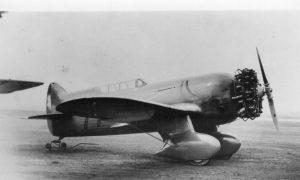
Click to Enlarge Images
